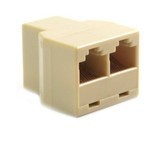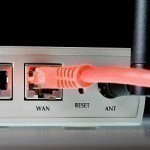ARP (Address Resolution Protocol) is used by network systems to convert system communications from the routable layer 3 ip protocol to the non-routable layer 2 data link layer protocols. In most cases, you don't need to modify this behavior at all, and system communications are optimal. In special circumstances it is preferable to have another system or network device answer arp requests for another system. This process is called proxy arp, because on network system is proxying for anothers ARP communications. Environments that use proxy arp There are few situations Read More
Token Ring
Token Ring is a local area networking system originally conceived in the late 1960s by IBM and patented in 1981, with IBM promoting its use throughout most of the 1980s. Although initially very successful, it was eventually displaced by Ethernet as the favored technology and architecture for local area networks (LAN); although IBM undertook a valiant effort to compete, this was not successful and IBM itself eventually stopped using token ring as its LAN standard. How Token Ring Works The token ring network is simple in design and conceptual operation. Read More
ISDN PRI
A PRI (Primary Rate Interface) is a telecommunication standard used in the Integrated Services Digital Network or ISDN for carrying multiple DS0 voice and data transmissions between two physical locations. PRI was developed specifically for industrial or large quantity users. It is an industrial ISDN line, while the Basic Rate Interface, or BRI, caters to home and small enterprises. Both Primary Rate Interface and Basic Rate Interface are made up of a number of B channels and D channels. The B Channel (Bearer Channel) is used for data transmission, including Read More
EtherCAT
EtherCAT stands for "Ethernet for Control Automation Technology." It is an open standard and high performance system that aims to use Ethernet protocols (the favored system for Local Area Networks) in an industrial environment, especially for factories and other manufacturing concerns which make use of robots and other assembly-line technologies. The outstanding and unique functional principle of EtherCAT is processing the Ethernet frame “on the fly” within an EtherCAT network. Ethernet Ethernet is the established (and favored) communications standard for local area networks, originally designed to connect different computers to Read More
Ethernet Splitter

An Ethernet splitter can split a single Internet connection so that two or more computers can connect to the Internet simultaneously. It can also create additional connections for other computers on a network, which can reduce the overall amount of cabling required to setup a network. Unfortunately, Ethernet splitters cannot resolve the network collision issues that may occur if the computers connected to the splitter are using the same network resources simultaneously. How to Connect an Ethernet Splitter Step 1 – Insert one end of the Ethernet splitter into the Read More
Is DSL Faster than Satellite Internet?
DSL, also called digital subscriber line, is a technology that delivers broadband Internet to many people's homes via their conventional telephone landline. DSL is one of two popular broadband Internet technologies used for the home market, the other being cable broadband which uses existing cable TV lines to deliver broadband Internet. Another growing technology for delivering broadband Internet to homes is Satellite Internet technology. While nowhere near as popular yet, satellite Internet technology is gaining popularity in rural areas where landlines or cable TV lines are not available. In addition, Read More
How fast is ADSL Speed?

ADSL (Asymmetric Digital Subscriber Line) options are available in many locations. The speeds will vary for the service in many ways depending on several factors. The reason why it is called an Asymmetric Digital Subscriber Line is simple, as the speed for downloads will be significantly faster than the upload speed. This is because consumer DSL services are usually used for downloading more so than uploading. The typical speeds will range from 375Kbps download and 128Kbps upload to 3072Kbps download and 448Kbps upload. The speed could go much higher when using wide area network ADSL Read More
PPP Authentication Protocols
Windows Server 2003 and Windows XP support the following PPP authentication protocols: PAP or Password Authentication Protocol The oldest forms of authentication schemes used where the user credential are sent in plain text. This is not the securest form of passing authentication credentials as anybody can use a third party sniffer program and capture these clear text username and password as they are unencrypted. The next thing that would happens is the news of a server being compromised due to intruder attack. Avoid using PAP as much as you can. Read More
Symmetric DSL
Symmetric Digital Subscriber Line (SDSL) is a kind of one kind of Digital Subscriber Line (DSL) used to provide high-speed Internet connectivity. Symmetric DSL is called “symmetrical” because the upstream and downstream connections have the same bandwidth. SDSL maintains the same high speed in both directions while working over the existing “twisted-pair” cables that exist in all telephone equipment. SDSL requires only one pair of copper wires to support a connection. These wires may reach as long as 3 kilometers. How SDSL Differs from ADSL Unlike the much more common Read More
DOCSIS (Data Over Cable Service Interface Specification)
Data Over Cable Service Interface Specification (DOCSIS) defines the interface standards for cable modems and supporting equipment involved in high speed data transfer and distribution over cable television system networks. It permits additional high-speed data transfer over an existing cable TV system and is widely used by television operators to offer Internet access through an already existing hybrid fiber coaxial infrastructure. Other devices that recognize and support DOCSIS include HDTV's and Web-enabled set-top boxes for televisions. In other words, the same cable that brings you CSI can also allow you Read More


Share on: